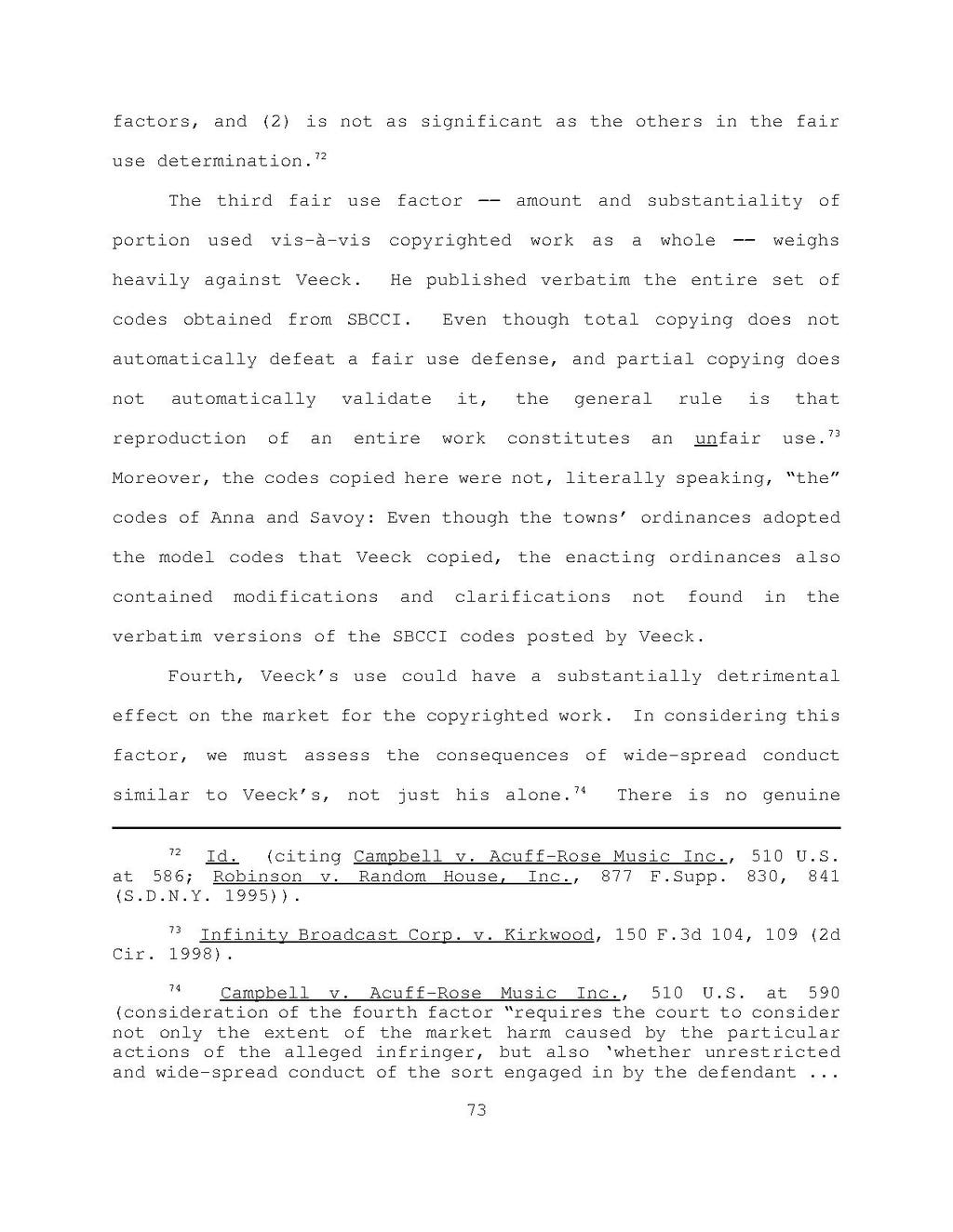factors, and (2) is not as significant as the others in the fair use determination.[1]
The third fair use factor—amount and substantiality of portion used vis-a-vis copyrighted work as a whole—weighs heavily against Veeck. He published verbatim the entire set of Even though total copying does not codes obtained from SBCCI. automatically defeat a fair use defense, and partial copying does not automatically validateit, the general an rule is that reproduction of an entire work constitutes unfair use.[2] Moreover, the codes copied here were not, literally speaking, "the" codes of Anna and Savoy: Even though the towns' ordinances adopted the model codes that Veeck copied, the enacting ordinances also contained modifications and clarifications not found in the verbatim versions of the SBCCI codes posted by Veeck. Fourth, Veeck's use could have a substantially detrimental effect on the market for the copyrighted work. In considering this factor, we must assess the consequences of wide-spread conduct similar to Veeck's, not just his alone. [3]
There is no genuine
- ↑ Id. (citing Campbell v. Acuff-Rose Music Inc.), 510 U.S. at 586; Robinson v. Random House, Inc., 877 F.Supp. 830, 841 (S.D.N.Y. 1995)).
- ↑ Infinity Broadcast Corp. v. Kirkwood, 150 F.3d 104, 109 (2d Cir. 1998).
- ↑ Campbell v. Acuff-Rose Music Inc., 510 U.S. at 590 (consideration of the fourth factor "requires the court to consider not only the extent of the market harm caused by the particular actions of the alleged infringer, but also 'whether unrestricted and wide-spread conduct of the sort engaged in by the defendant ...
73
